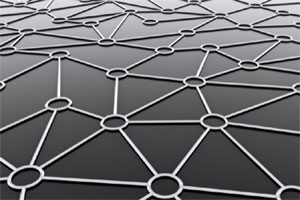One of the hot topics over the past year is that, with the advent of significant renewable energy, utilities must change how they conduct business and charge for services – but that’s been theoretical until now – NY state is putting it into action.
New York is embarking on an initiative that radically transforms the function of utilities in exactly the ways we’ve been talking about. It’s exciting!!!!
Rather than selling energy that’s under centralized control, utilities will buy electricity from thousands of small generators that have, for example, solar on their roof. Utilities will make money by linking them together and integrating the energy into the grid.
No longer would utilities be power providers that make money by selling more energy. Rather, they make money by helping customers use less energy, while "directing traffic" and "coordinating" thousands of small inputs to the grid.

To get more solar on NY’s grid, Governor Cuomo also announced the extension of NY-Sun through 2023, setting aside $1 billion for an impressive 3 gigawatts of solar, employing 10,000 people in the process.
Reforming the Energy Vision
Calling it an "energy modernization initiative," Governor Cuomo says the "Reforming the Energy Vision" program will fundamentally transform the way electricity is distributed and used in New York State. This unprecedented effort will create the power grid of the future and forever change the way consumers buy and use energy."
The idea is to make the electric system much more energy efficient and reliable, empower customer choice, encourage deeper penetration of renewable energy and wider deployment of microgrids, on-site power and energy storage.
"The existing ratemaking structure falls far short of the pace of technology development that defines many parts of our economy. By fundamentally restructuring the way utilities and energy companies sell electricity, New York can maximize the utilization of resources, and reduce the need for new infrastructure through expanded demand management, energy efficiency, renewable energy, distributed generation, and energy storage programs," says Audrey Zibelman, Chair of the New York State Public Service Commission, which is charged with leading the initiative.
How it Works
The best example of the value of modernizing the electric grid is the current inefficiency of peak demand, Cuomo says. Demand for electricity skyrockets during the hottest summer days and to make sure enough electricity is always available, customers have to spend hundreds of millions of dollars to maintain a system that’s hardly used.
In the not-too-distant future, this will change as residential, commercial and industrial customers install energy demand systems. For residential customers that means "smart appliances" smart refrigerators, air conditioners and hot water heaters that automatically share information with the utility. During those few peak demand days, the utility would signal tens of thousands of appliances in a particular region to slightly cut electrical consumption to lower demand.
Meanwhile, rooftop solar systems would feed their excess power into the grid, providing more energy when it’s needed. At other times, the energy would go into batteries instead to reduce power demand.
Several factors are converging to make this vision a reality: renewable energy has reached cost-competitiveness; smart grid technological innovation; and an aging infrastructure that is no longer reliable given the increasing frequency of severe weather events.
That’s the structure we need for the 21st Century, and it is the change that utilities, ALEC and Koch Bros groups are fighting against across the country.
